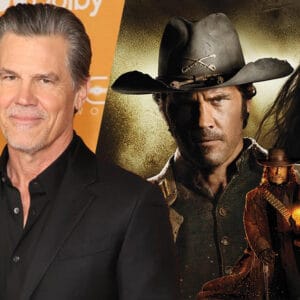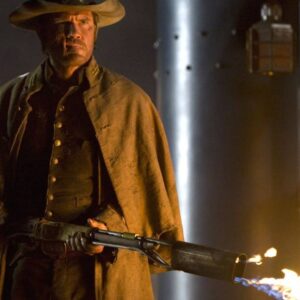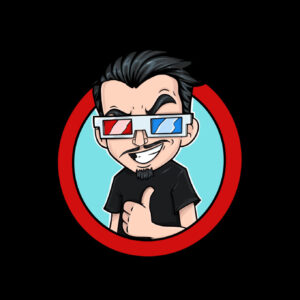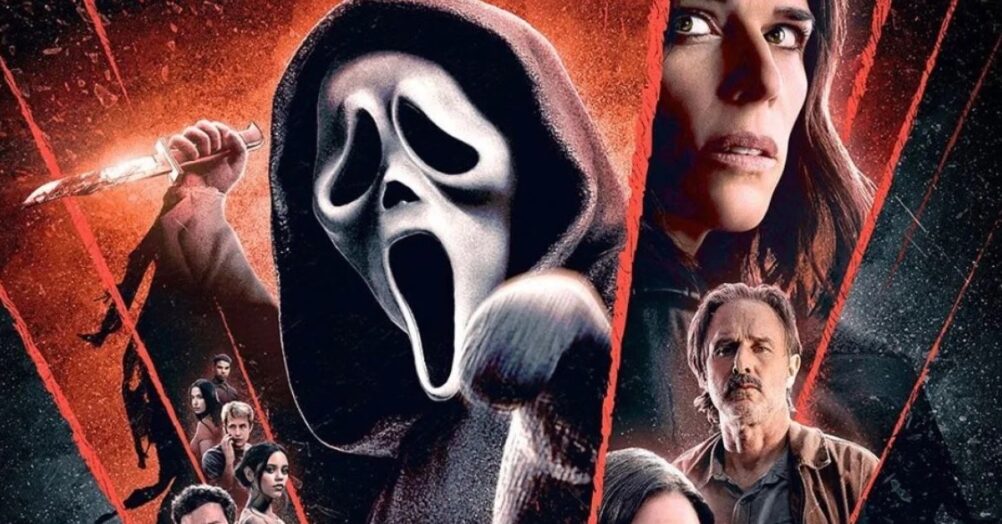For ten years, we as moviegoers were treated to both the rise and fall of the DC Extended Universe, or DECU for short (read our rankings here). The rise began with the release of Man of Steel in 2013, directed by Zack Snyder, marking the start of an ambitious plan to create a shared cinematic universe featuring iconic DC Comics characters. This was followed by Batman v Superman: Dawn of Justice and Suicide Squad which expanded the universe and introduced key characters. They were both met with less-than-stellar reviews. Over the years we would see success like Wonder Woman, Aquaman and Shazam as well as James Gunn’s brilliant take on The Suicide Squad. There were also mixed-reviewed films like Justice League, Wonder Woman 1984, Aquaman and the Lost Kingdom and The Flash (which we loved). The DCEU couldn’t compete with Marvel with tons of these movies failing to connect with critics and audiences. So, in November 2022, the appointment of James Gunn and Peter Safran as co-CEOs of DC Studios would begin. It marked a new chapter in the DCEU as well as its ongoing development today.
Back in the late 2000’s, While Marvel would have their X-Men franchise, and Fantastic Four films as well as getting the MCU off the ground with Iron Man, DC would be releasing their own films too. We had already seen Nolan’s standalone trilogy for Batman. But other failed properties such as Catwoman and Superman Returns weren’t doing so hot. Watchmen was divisive among critics and its fans and Constantine, unfortunately, wasn’t the box office success the studio had hoped for.
In 2010, Warner Brothers, along with DC Entertainment and Legendary Pictures released Jonah Hex. A perfect choice for this subject matter because it faced numerous issues that contributed to its critical and commercial failure. The movie suffered from a troubled production, including significant script rewrites and directorial changes, which led to a disjointed and incoherent narrative. Critics and audiences alike criticized the film for its muddled plot and lack of direction, ultimately leading to poor box office performance and a tarnished reputation in the realm of comic book adaptations. So today we’re going to find out just what happened to this movie.
To understand what went wrong, one must understand a little about the comic character and his background. He first appeared in the early 1970s and was created by writer John Albano and artist Tony DeZuniga. Jonah Hex is a scarred bounty hunter and gunslinger known for his anti-heroic demeanor and distinctive facial disfigurement. Set in the American Old West, Hex’s stories often explore themes of justice, revenge, and redemption against the backdrop of a lawless frontier. Initially introduced as a gritty Western character, Jonah Hex gained popularity for his complex morality and willingness to operate outside conventional hero norms. Over the decades, he would appear in various comic series and adaptations.

Back in 2000, 20th Century Fox would develop an hour-long tv movie for Jonah Hex. Akiva Goldsman and Robert Zappia were producing, but the project was never fully fleshed out. In 2007, Warner Bros held the film rights to the character and wanted to make a film based on the character. This time Akiva would work with Andrew Lazar as producers on the project. Mark Neveldine and Brian Taylor, of Crank fame, wrote the screenplay and were hired to direct. However, creative differences emerged leading to Neveldine and Taylor’s departure as directors on the film. Warner Brothers would devise the idea of hiring Andy Fickman or McG as a director on the film. But in January 2009, the studio brought in Jimmy Hayward to direct. He was a former Pixar animator with only one directorial credit, Horton Hears a Who!
The casting process was not without its challenges and controversies. One notable issue arose with the initial choice of actor for the lead role. Originally, Thomas Jane lobbied to play Jonah Hex. Both Matthew McConaughey and Emile Hirsch would be considered for the role. But eventually, Josh Brolin was offered and accepted the role as Jonah.
Additionally, the casting of Megan Fox as Lilah, Jonah Hex’s love interest, also garnered attention. While Fox brought her star power to the film, her inclusion sparked debate among fans and critics regarding the suitability of her role and the dynamics of her character’s relationship with Jonah Hex. Supporting roles included John Malkovich as Quentin Turnbull, Hex’s vengeful adversary, and Michael Fassbender as Burke, Turnbull’s ruthless henchman. Will Arnett was also hired to act in this as Lieutenant Grass. However, he was keen to appear in it, mainly because he so rarely would be offered a straight dramatic role. Maybe this role helped him land a good balance of comedy and drama in Bojack Horseman, but we’ll never know.
Filming began in April 2009 in Louisiana. Because of Hayward’s lack of experience with live-action productions, it would contribute to clashes with the studio and creative team. As a result of this, Francis Lawerence was brought in to handle reshoots, which would only add to the film’s production complexities. During production, Josh Brolin could only shave off half of his beard to accommodate his prosthetic on one side of his face. For several months he would walk around with only half a beard on his face. He also wasn’t able to eat while wearing the prosthetics. Speaking of prosthetics, if you look closely enough, you’ll notice John Malkovich wears a prosthetic nose too. Initially, Josh hated the script. He would however change his mind as he grew to like the tongue-in-cheek tone.
Unfortunately, the film’s post-production phase was rushed, impacting the quality of visual effects and overall polish. The heavy metal band Mastodon scored the film as well as composer John Powell. Mastodon’s music added a distinctive and intense energy to the film, reflecting the harsh landscapes and morally complex characters. Because the film underwent reshoots and reedits, Powell had other commitments and left. He was replaced with Marco Beltrami, who had a different appreciation for the music. The first soundtrack Mastodon had recorded was written for scenes that were scrapped during reshoots. Beltrami had Mastodon work on a new score, to their frustration. It contrasted with the original version and was considered more restrained and subtle. On June 29, 2010, two weeks after the film was released in theatres, we were treated to the digital release entitled Jonah Hex: Revenge Gets Ugly EP. It consisted of only six songs, four new tracks and two alternative tracks of previously recorded songs.

Jonah Hex was released to theaters on June 18, 2010, the same day as Pixar’s hugely successful threequel, Toy Story 3. Unfortunately, it opened in 7th place, grossing only $5 million on opening weekend. It would open behind the third week of Get Him to the Greek, the fifth week of Shrek Forever After and fourth week of Prince of Persia: The Sands of Time. By it’s third week, it would get knocked down to 31st place making a measly domestic box office run of $10 million on a budget consisting of $47 million. Because of its poor domestic box office, it wouldn’t be released wide internationally. Because of this, the film made less than $500,000 internationally. At the end of its theatrical run in August 2010, it would limp to a measly $10 million worldwide.
Currently, the film holds a 12% on Rotten Tomatoes with the critic’s consensus stating: “Josh Brolin gives it his best shot but he can’t keep the short, unfocused Jonah Hex from collapsing on screen.” Critics weren’t very kind to this film with Tom Huddleston of Time Out saying, “At 81 minutes with credits, Jonah Hex feels crude, lazy and entirely perfunctory.” Rafer Guzman of Newsday said, “There’s just one ingredient missing: anything with a clue.” Through all the negativity, it’s nice to see a few critics say something positive, such as Stephanie Zacharek of Movieline. She would go on to say, “Jonah Hex could be bigger, louder and longer, with more special effects and faster cutting, but it errs on the side of simplicity. And to that, let’s all raise a shot glass.”
Houston Film Critics Society would name it the worst picture of the year. It also garnered two Razzie nominations including Worst Actress for Megan Fox and Worst Screen Couple for Josh Brolin’s face and Megan Fox’s accent.
Because Warner Brothers thought the film would be a success, they released several toy lines with different toy manufacturers including Tonner Doll Company Inc, NECA, WizKids and DC Direct. Each company made action figures and dolls of Jonah Hex, Lila and Tunbull, in their own unique ways. Funny enough, I’ve seen these toys turn up in random thrift stores for fairly reasonable prices…just don’t expect tons of people to be in bidding wars on eBay.
Jonah Hex was released on DVD and Blu-ray on October 19, 2010. The Blu-ray would contain some decent features including a Picture-in-Picture experience with director Jimmy Hayward. The PIP would contain a variety of interviews with Josh Brolin, Megan Fox, John Malkovich and other cast and crew. It’s all standard fluff and there is never anything stated about whether or not there were any production problems. There was also a nice feature entitled The Inside Story of Jonah Hex. It traces the history of our anti-hero as well as his different incarnations and evolution to who he would come to be in 2010. There’s also a small helping of deleted scenes, just in case you were itching to see what the studio approved to be released to the public.
Years later, Brolin would admit he hated the experience of making this film, saying the production schedule was hectic and would blame the failure on studio interference as well as the end result on director Jimmy Hayward. Brolin said he was inexperienced and a bad choice for the role. He had wanted Park Chan-wook to direct and believed his version of Jonah Hex would have been closer to the film High Plains Drifter, which was how Brolin wanted it to look. Upon release, Megan Fox wasn’t happy with the film. As the years have gone on, she would call it a decent movie stating, “While I shouldn’t have been nominated for an Oscar for it, I’m definitely not bad in it.”
Jonah Hex has its strengths and weaknesses. On the positive side, Josh Brolin delivers a solid performance, capturing the grizzled, world-weary demeanor of the titular character, and the film’s visual style effectively combines gritty Western aesthetics with supernatural elements. The costume design, particularly Hex’s distinctive scar and wardrobe, is faithful to the comics, and the action sequences, featuring unique weapons like twin guns and horse-mounted Gatling guns, add an interesting twist to traditional Western shootouts. Additionally, the edgy soundtrack by Mastodon enhances the film’s dark atmosphere and makes for a good time, for your ears at least.
However, the movie has significant drawbacks. The plot is disjointed and lacks depth, with rushed character motivations and poorly explained developments. At around 81 minutes, the film is too short to fully develop its story and characters, leaving it feeling incomplete. By the time you are ready to care about these characters and the plot, it’s over. Most characters, including the villain Quentin Turnbull, are underdeveloped. John Malkovich looks really bored in the role and doesn’t offer anything truly engaging…something I wasn’t expecting from the veteran actor. The film also struggles with tone, fluctuating between dark, serious moments and campy, over-the-top action, which undermines the overall narrative. While the supernatural elements are intriguing, they often feel tacked on rather than integral to the story.
So what happened to Jonah Hex? It failed to deliver on its potential due to a combination of factors. The film’s weak plot, underdeveloped characters, and inconsistent tone led to poor critical reception. Extensive production issues, including rewrites, reshoots, and creative differences, contributed to its disjointed feel. Commercially, it was a significant flop, grossing only a fraction of its budget. Despite strong performances and a visually appealing style, Jonah Hex could not overcome its fundamental flaws, ultimately becoming a cautionary tale in comic book film adaptations.
As stated in the beginning of this episode, we really hope James Gunn brings a fun and creative shift for the DCU. Characters that no one had heard about such as The Guardians of the Galaxy, or the characters he brought to light in The Suicide Squad, have become household names as well as enjoyed by many. Maybe James will give Jonah Hex a second chance and reinvigorate interest in the character, delivering an exciting and memorable addition to the superhero and Western film genres alike.



















Follow the JOBLO MOVIE NETWORK
Follow us on YOUTUBE
Follow ARROW IN THE HEAD
Follow AITH on YOUTUBE